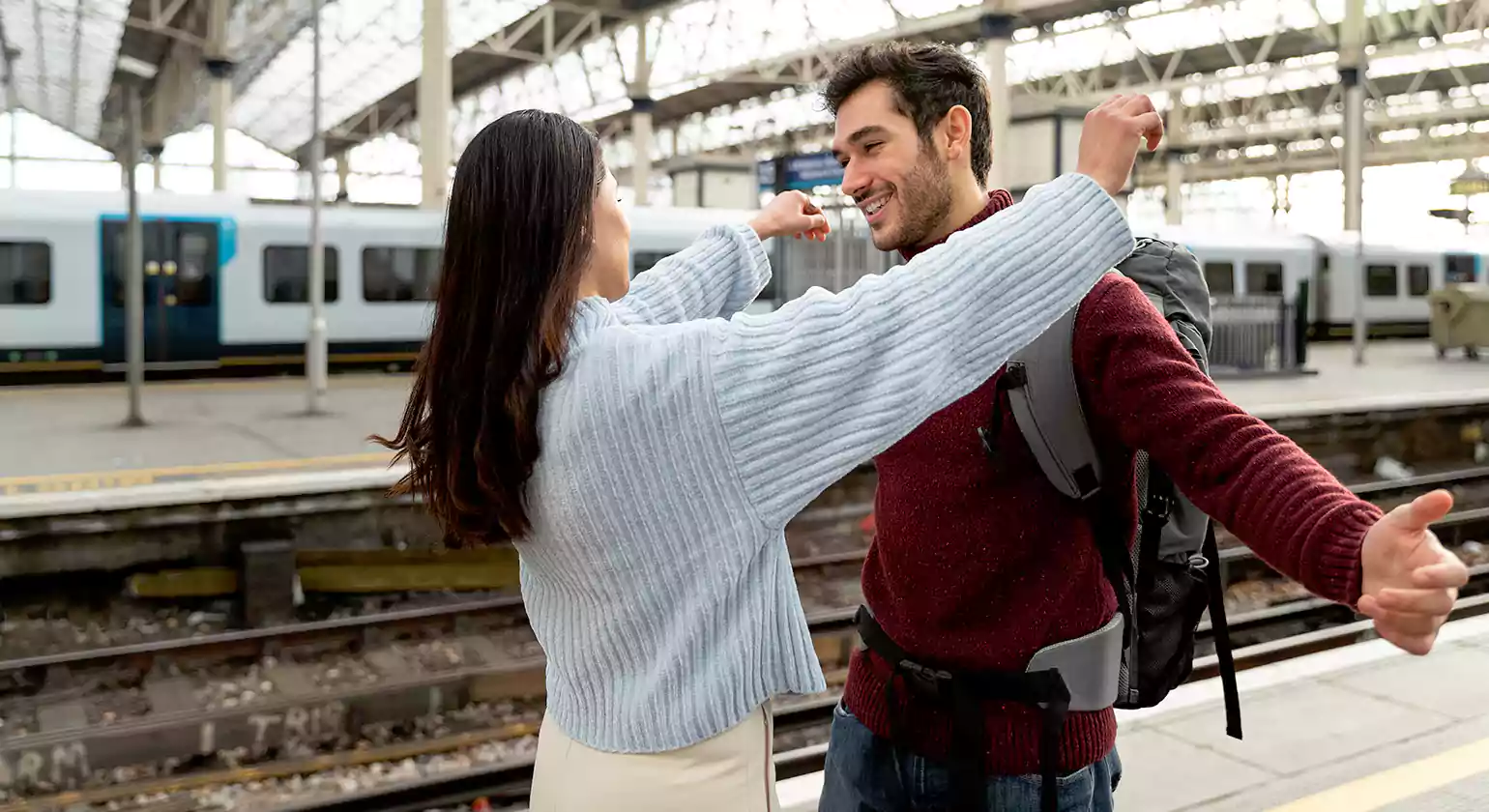Table of Contents
Understanding Long Distance Relationships
Long Distance Couples Therapy begins with acknowledging what makes these relationships different. In a long-distance relationship, partners must cope with the absence of shared routines, physical touch, and spontaneous connection. While technology helps bridge some of the gap, it also introduces challenges—miscommunications via text, delayed responses, and emotional detachment can all add pressure to an already complex dynamic.
Through Long Distance Couples Therapy, couples explore how time zones, work schedules, and digital communication styles impact their connection. Therapy offers tools to build resilience in the face of these stressors and helps couples reframe their experience from one of limitation to one of opportunity. By addressing these foundational struggles, therapy lays the groundwork for meaningful and lasting intimacy.
Why Consider Couples Therapy for Long-Distance Relationships?

It’s a common misconception that couples therapy is only for those in crisis. In reality, Long Distance Couples Therapy is just as effective for prevention as it is for healing. Many couples benefit from therapy before major problems arise, using it as a safe space to explore vulnerabilities, clarify expectations, and improve their communication.
Long Distance Couples Therapy provides strategies to overcome emotional disconnection, rebuild trust, and maintain intimacy. It’s also ideal for partners who struggle to align their future goals or feel emotionally drained by the distance. With the help of a trained therapist, couples learn how to manage loneliness, jealousy, and uncertainty in constructive, compassionate ways.
Therapy also debunks myths around online counseling. Virtual sessions are just as effective as in-person ones and are often more convenient for long-distance couples. With HIPAA-compliant platforms and therapists licensed across multiple states, Long Distance Couples Therapy is accessible, safe, and tailored to your unique relationship.
How Long Distance Couples Therapy Works

Long Distance Couples Therapy typically starts with an intake session, where both partners share their relationship history, individual concerns, and shared goals. From there, the therapist creates a plan that incorporates structured sessions, reflection exercises, and actionable strategies.
Sessions are conducted virtually via secure video platforms, ensuring accessibility no matter where each partner lives. Therapists help couples develop safe spaces for these sessions, minimizing distractions and fostering emotional presence.
Therapy often integrates tools like asynchronous journaling, relationship check-ins, and communication exercises. These practices extend the work beyond session time, helping couples stay emotionally connected throughout the week.
What sets Long Distance Couples Therapy apart is its adaptability. It can be customized to meet the needs of multicultural couples, LGBTQ+ partnerships, faith-based relationships, and international pairs. The therapist’s role is not only to facilitate healing, but to honor the context and culture of each relationship.
Evidence-Based Techniques in Long Distance Couples Therapy

Long Distance Couples Therapy draws on proven therapeutic models such as Cognitive Behavioral Therapy (CBT), Emotionally Focused Therapy (EFT), and Narrative Therapy to help partners grow closer across the miles.
CBT techniques are particularly helpful for managing anxiety, insecurity, or catastrophic thinking—like assuming a delayed message means something is wrong. Through CBT, couples learn to reframe negative assumptions and replace them with realistic, balanced thoughts.
Narrative Therapy invites partners to co-author their story, focusing on shared values and resilient moments. This helps shift the relationship narrative from one of “waiting and missing” to one of “growing and connecting.”
Therapists may also introduce digital intimacy exercises—guided questions, mindfulness techniques, or sensate focus practices adapted for virtual interactions. These techniques encourage emotional and sensual closeness even in the absence of physical touch.
Long Distance Couples Therapy also includes trust-building rituals, such as daily emotional check-ins, shared reflections, and weekly commitment exercises. These practices create a reliable rhythm, reduce emotional uncertainty, and reinforce the bond between partners.
Key Focus Areas in Long-Distance Therapy

Long Distance Couples Therapy often focuses on four essential pillars: communication, trust, emotional connection, and conflict resolution. Each of these areas plays a crucial role in helping long-distance couples thrive despite the physical distance. Without consistent work on these areas, misunderstandings can accumulate and resentment may build, making it difficult to maintain emotional closeness over time.
Communication - The Lifeline of Long Distance Relationships
In Long Distance Couples Therapy, improving communication is a top priority. Since long-distance couples rely heavily on text, phone, and video chat, therapy helps them develop communication routines that foster both clarity and warmth. The “Three-Bucket Method”—practical updates, emotional check-ins, and aspirational goals—helps partners balance logistics with heartfelt conversation. This method is particularly helpful for couples who find themselves stuck in surface-level interactions or logistical exchanges that lack emotional depth.
Therapists also teach couples how to manage miscommunications and practice repair techniques when conversations don’t go as planned. This includes learning how to give each other space, set clear expectations about response times, and express concerns without escalating tension. These practices are especially important in long-distance relationships, where miscommunication can easily be magnified due to the absence of non-verbal cues.
Trust and Security Across the Distance
Trust can be one of the hardest things to maintain in a long-distance relationship. Long Distance Couples Therapy helps couples identify and rebuild trust that may be eroded by past betrayals, insecurities, or long-standing fears. Therapists encourage transparency through rituals like shared calendars, open messaging policies, and daily emotional check-ins. These practices help reinforce reliability and emotional safety.
Therapy also supports couples in setting healthy boundaries that respect individual autonomy while fostering connection. Whether dealing with jealousy, social media boundaries, or different views on privacy, Long Distance Couples Therapy helps partners explore these topics without defensiveness or blame.
Emotional Intimacy and Connection
Maintaining emotional closeness while apart takes creativity and commitment. In Long Distance Couples Therapy, couples learn how to build emotional intimacy through consistent gestures of care—voice notes, video messages, virtual meals, shared playlists, or even co-watching favorite shows. These routines create a sense of daily togetherness.
Therapists also guide couples through deeper vulnerability work. This might include reflective journaling exercises, gratitude rituals, or structured conversations around values and future vision. These tools strengthen the couple’s emotional bond, helping them feel like teammates even when physically apart.
Conflict Resolution & Problem-Solving
Disagreements can feel more intense in long-distance relationships due to the lack of physical presence to diffuse tension. Long Distance Couples Therapy offers practical strategies to navigate conflicts with empathy and structure. Techniques such as active listening, speaker-listener turns, and conflict debriefing help couples move through disagreement without causing emotional disconnection.
Therapists also help partners identify recurring conflict cycles and uncover the unmet needs that drive them. By exploring emotional triggers and attachment styles, couples gain a clearer understanding of how to respond to each other’s distress with care instead of defensiveness.
Navigating Physical Separation & Sexual Intimacy

Physical separation impacts more than sexual connection—it also affects how couples express affection and experience closeness. In Long Distance Couples Therapy, therapists help couples discuss their sexual needs, frustrations, and expectations with openness and respect.
This work may include exploring digital intimacy, such as video intimacy with mutual consent, or creating sensory experiences through scent exchanges, audio messages, or bedtime routines. These substitutes for physical touch can help maintain sexual and sensual closeness when miles separate partners.
Therapy also prepares couples for the emotional rollercoaster that can come with reunions and visits. Many couples feel pressured to make every moment perfect, which can actually lead to tension or performance anxiety. Long Distance Couples Therapy teaches couples how to manage these transitions with flexibility, emotional awareness, and empathy.
In some cases, couples may choose to explore ethical non-monogamy or other alternative relationship models. Therapy provides a safe, neutral space to navigate these complex decisions with honesty and intention.
Planning for the Future - Therapy for Long-Term Goals

A long-distance relationship without a plan can lead to emotional stagnation. Long Distance Couples Therapy helps couples co-create a vision for their future, whether they’re planning to relocate, live together, or maintain a long-distance lifestyle by choice or necessity.
Therapists guide couples through logistical planning—career decisions, financial management, and moving plans—as well as emotional preparation for the changes ahead. Relocation can bring new stressors, including integration into a new community or the loss of independence. Therapy helps couples anticipate and navigate these transitions together.
When distance is long-term or indefinite, therapy focuses on strategies to maintain emotional fulfillment and security. Couples develop relationship rituals, long-term visit schedules, and communication routines that reflect commitment and shared values, even across time zones.
The Therapist’s Role in Long Distance Relationship Counseling

In Long Distance Couples Therapy, the therapist becomes a trusted guide who fosters connection, accountability, and insight. They create a neutral space where both partners feel safe expressing difficult emotions, navigating differences, and reconnecting when emotional walls have gone up.
Therapists facilitate honest and respectful conversations, especially around issues like unmet needs, mismatched priorities, or emotional reactivity. They help balance emotional dynamics, ensuring both partners are heard—especially when one tends to dominate or withdraw.
Long Distance Couples Therapy is also culturally responsive. Therapists adapt their style to accommodate multicultural relationships, faith-based values, LGBTQ+ identities, and cross-border realities. By understanding the couple’s relational context, therapists provide strategies that honor the uniqueness of each partnership.
Therapists also help couples track progress, revisit goals, and celebrate growth—keeping them engaged and motivated through each phase of the relationship.
Tools, Rituals, and Resources for Thriving Apart

Long Distance Couples Therapy is most effective when paired with everyday rituals and resources that support ongoing connection. Therapists help couples establish weekly virtual date nights, creative check-ins (like voice journals or emoji-only conversations), and shared digital spaces such as collaborative calendars or cloud photo albums.
Helpful tools include relationship apps like Lasting or paired journaling platforms that prompt emotional reflection. These tools can supplement therapy and help partners stay emotionally present between sessions.
Beyond the couple, therapy encourages each partner to invest in individual well-being. Building strong social networks, pursuing hobbies, and prioritizing self-care ensures the relationship remains enriching—not all-consuming. This holistic approach strengthens both the individuals and the bond they share.
For couples needing extra support, therapists may also recommend books, podcasts, or LDR communities that offer additional insights and encouragement.
Conclusion - Rewriting the Rules of Love from Afar

Long Distance Couples Therapy offers couples more than communication tools—it provides hope, structure, and the emotional support necessary to sustain love beyond physical proximity. When approached with intention, therapy transforms distance from a limitation into a learning opportunity.
Through guided conversations, vulnerability exercises, and tailored strategies, couples develop resilience and deepen emotional intimacy. They learn to see challenges not as threats, but as invitations to grow together. With commitment, trust, and the right therapeutic support, long-distance love can flourish.
At Lakes Counseling, we specialize in Long Distance Couples Therapy. Whether you’re working through emotional disconnect, planning to close the gap, or seeking to strengthen your bond, our expert therapists are here to help you navigate your journey.
Contact us to learn how Long Distance Couples Therapy can support your relationship—no matter how many miles lie between you.
Read more –
What is Couples Therapy? A Comprehensive Guide
What to Expect from Your First Therapy Session – Expert Tips & Guide
FAQ's
Can long-distance couples really benefit from therapy?
Yes, therapy can help long-distance couples strengthen communication, resolve conflicts, rebuild trust, and maintain emotional intimacy, even when miles apart. Online sessions make it accessible and effective for couples in different locations.
What are the most common challenges faced by long-distance couples?
Common challenges include communication breakdowns, trust and jealousy issues, lack of physical intimacy, misaligned expectations about the future, and feeling disconnected from each other’s daily lives.
What specific techniques do therapists use to help long-distance couples?
Therapists often use Emotion Focused Therapy (EFT), the Gottman Method, solution-focused therapy, narrative therapy, and communication exercises tailored for remote interaction to help couples reconnect and resolve issues.
How do we find a therapist licensed in both our states?
Look for therapists licensed in both states or those who participate in PSYPACT, which allows practice across many states. Ask potential therapists about their licensure and experience with interstate couples; they may help navigate legal requirements.
What if one partner is hesitant about therapy?
Start with an open conversation about your goals and concerns. Suggest trying a few sessions as a low-pressure introduction, and emphasize therapy as a tool for growth, not blame.
How much does online couples therapy cost?
Online couples therapy typically ranges from $80 to $250 per session, depending on the provider and therapist’s experience. Some platforms offer packages or sliding-scale fees for affordability.
How do we maintain progress between sessions?
Therapists may assign exercises like communication check-ins, shared activities, or journaling. Keeping regular routines and practicing new skills between sessions helps reinforce progress.
What are signs that therapy is working?
Improvements in communication, increased trust, more effective conflict resolution, and a greater sense of connection are key signs therapy is helping your relationship.
Can we do couples therapy if we’re in different countries?
Yes, many therapists offer virtual sessions for couples in different countries. Check that your therapist is familiar with international laws and time zones, and ensure both partners have reliable internet access.
How much does online couples counseling cost compared to in-person?
Online therapy is often less expensive than in-person sessions due to lower overhead costs and flexible scheduling. Prices vary, but online options can be more budget-friendly.
What if one partner wants to stay long-distance permanently?
Therapy can help you explore underlying reasons, align expectations, and negotiate compromises. Open dialogue with a neutral therapist can clarify whether the relationship can thrive with ongoing distance.
Are there exercises we can try before committing to therapy?
Yes, try scheduled video calls, daily check-ins, sharing gratitude lists, or doing parallel activities (like watching a show together online) to strengthen your connection.
Can therapy work if we’ve just started dating long-distance?
Absolutely. Early therapy can help you establish healthy communication patterns, clarify expectations, and build a strong foundation for your relationship.
What if we have different communication styles?
A therapist can help you identify differences and teach strategies to bridge gaps, such as active listening, clarifying needs, and finding mutually comfortable ways to connect.
How long should we try therapy before considering other options?
Many couples notice improvements within a few months, but the timeline varies. Consistent participation and openness to change are key; discuss progress with your therapist regularly.
How do we stay emotionally intimate without physical touch?
Focus on regular, meaningful conversations, sharing feelings, and creating rituals like virtual date nights or sending thoughtful messages to maintain emotional closeness.
What should we expect in the first few therapy sessions?
Expect to discuss your relationship history, current challenges, and goals. The therapist will guide you in setting expectations and introduce initial communication or connection exercises.



